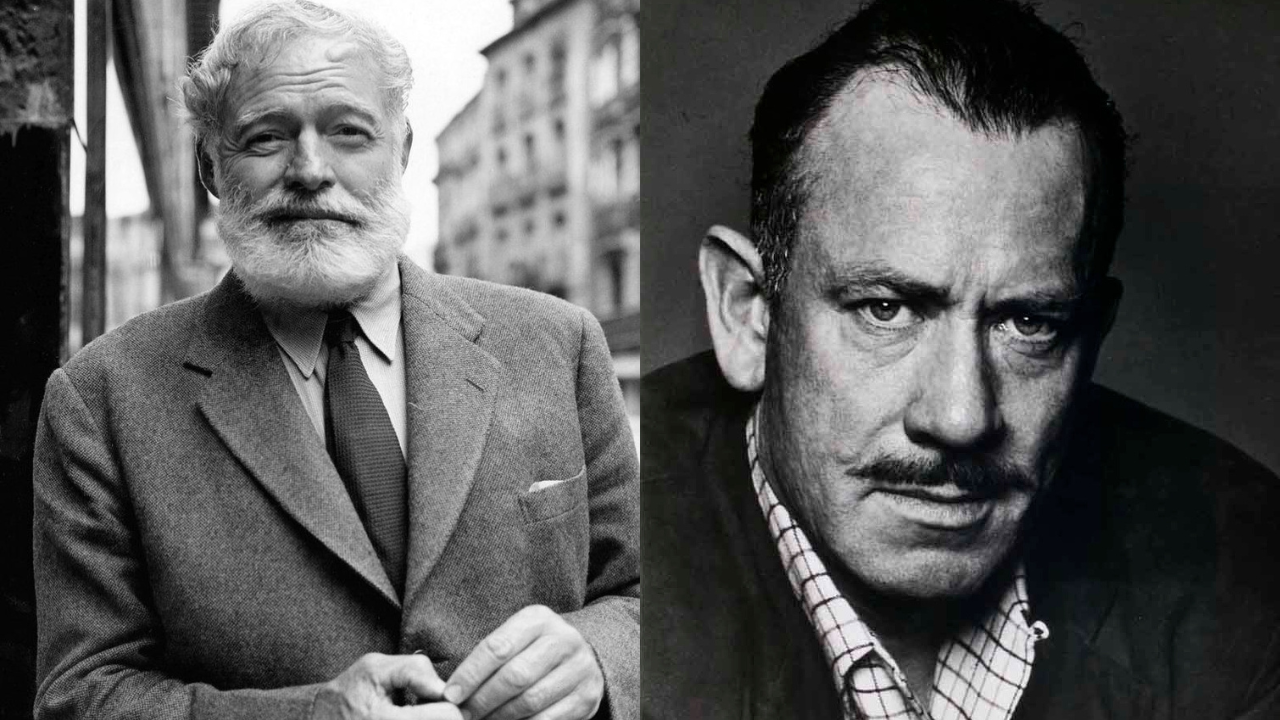
Ernest Hemingway vs. John Steinbeck: Which Literary Titan Captured the American Spirit Best? (Picture Credit – IMDB)
American literature is rich with voices that define its identity, but few stand as tall as Ernest Hemingwayand John Steinbeck. These literary giants, writing in the same era yet with vastly different styles, offered distinct portraits of the American experience. Hemingway’s sharp, minimalistic prose highlighted personal struggle and existential questions, while Steinbeck’s sweeping narratives shed light on the collective hardships of working-class Americans. Which of these titans best captured the true American spirit? Their works, themes, and legacies hold the answer.
Hemingway’s America: Grit, Isolation, and the Individual
Ernest Hemingway’s writing was defined by brevity, masculinity, and an unwavering focus on the individual. His “iceberg theory” of storytelling, where much of the meaning lay beneath the surface, reflected a uniquely American form of resilience. Novels like ‘The Sun Also Rises’ and ‘A Farewell to Arms’ portrayed stoic, disillusioned protagonists navigating a world marred by war and loss. His characters were loners, often seeking purpose in adventure, love, or violence.
Hemingway’s America was one of action and consequence, where survival was won through courage and perseverance. His spare, declarative sentences mirrored the rugged individualism that has long been mythologized in American culture. His influence on American writing remains unparalleled, shaping generations of authors who sought to write with honesty and precision.
Steinbeck’s America: Compassion, Community, and Social Justice
John Steinbeck, in contrast, painted a broader canvas of American life. His works delved into the struggles of the working class, depicting their hardships with deep empathy. Novels like ‘The Grapes of Wrath’ and ‘Of Mice and Men’ presented raw, unfiltered accounts of economic despair and the resilience of human connection. His characters were not just individuals; they were part of a larger social fabric, often grappling with issues of injustice, poverty, and displacement.
Steinbeck’s prose was rich and descriptive, capturing the land and its people with poetic intensity. His belief in the dignity of the common man made him a champion of social realism in literature. Through his writing, he emphasized the interconnectedness of American life, reminding readers that the fate of one was tied to the fate of all.
Who Defined the American Spirit Best?
Choosing between Hemingway and Steinbeck is like choosing between solitude and solidarity. Hemingway embodied the rugged, individualistic spirit often associated with the American dream—the belief that one must carve out their destiny through sheer will. Steinbeck, on the other hand, captured the collective struggle, emphasizing that resilience comes not just from within, but from the strength of the community.
Both authors remain towering figures in American literature, shaping its themes and stylistic evolution. Hemingway’s crisp, unadorned prose and Steinbeck’s compassionate storytelling continue to inspire readers and writers alike. The answer to who best captured the American spirit may depend on what version of that spirit resonates most with each reader.
Ernest Hemingway and John Steinbeck presented contrasting yet equally vital facets of the American experience in their literary works: Hemingway, with narratives deeply rooted in individual resilience and stoicism, and Steinbeck, with stories focused on communal struggles and empathetic portrayals of hardship. These distinct perspectives are both essential for a comprehensive understanding of the nation’s rich and complex literary soul, capturing different aspects of American life and values.
GIRISH SHUKLAAUTHORA dedicated bibliophile with a love for psychology and mythology, I am the author of two captivating novels. End of Article
